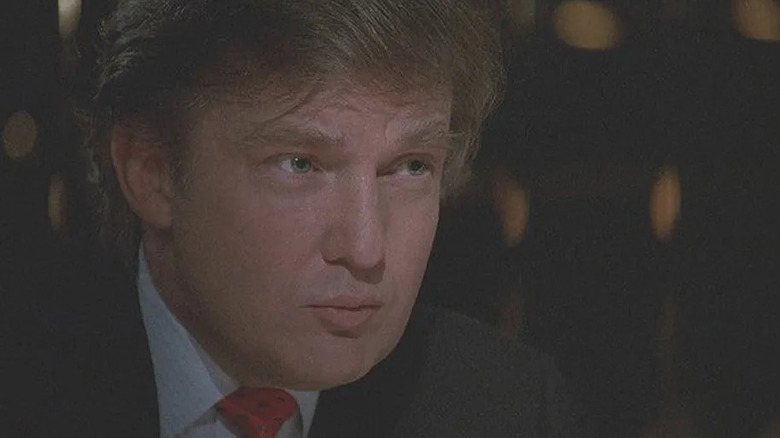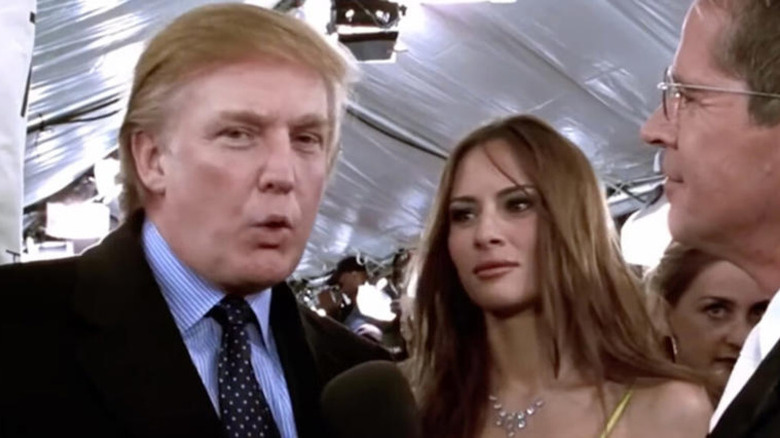Children of the 1980s understand how deeply weird it is that Donald Trump is now considered a politician. 40 years ago, Trump was a clownish pop culture figure more than anything. He was often described as a real estate mogul in the press, but he was more often parodied on sitcoms and in comic strips as the world’s worst millionaire, a caricature of a pseudo-celebrity, and the central symbol of Ronald Reagan’s aggressively wicked yuppie class. He was a whimsical punchline more than he was a respected businessman and his financial failures were just as notorious as his successes. I personally recall a joke from MAD Magazine that said Trump was working on a book about his personal success … but that he was stuck on Chapter 11.
Trump served as the template for multiple villains in other media, including Gordon Gekko from “Wall Street,” C. Montgomery Burns from “The Simpsons,” King Koopa in “Super Mario Bros,” Biff Tannen from “Back to the Future Part II,” and Barry Tarbarry in “The 100 Lives of Black Jack Savage.”
It wouldn’t be until the mid-2000s and the launch of “The Apprentice,” along with his birther conspiracies, that Trump would begin appearing on right-wing news outlets. Some found his decades-long media career was enough to lend him some kind of credibility, and, lo, he became a politician. Some may even recall that he was president for a spell. And to think, he once had to appear in ridiculous Pizza Hut commercials to make ends meet.
As a pop culture figure, Trump was roped into multiple film projects in his career, often with the felon playing a version of himself. He has racked up 11 acting credits in scripted feature films, all of them as rich moguls, hotel owners, or some other form of millionaire. Trump always liked to be seen as wealthy and important, even if he had to pretend to be his own publicist to do it, and his film career always felt like an extension of his own quest for self-aggrandizement and brand publicity.
Here, then, are the 11 films to feature Trump as an actor.
Trump in the ’80s and ’90s
Trump’s first acting role was in the supernatural sex farce “Ghosts Can’t Do It,” a film about a rich mogul (Anthony Quinn) who dies and returns to Earth as a ghost to comfort his much younger, oversexed widow (Bo Derek). The two plot to murder another rich mogul so Quinn can possess his body, and the pair can have sex again. This, one might note, is a plot similar to “Hellraiser,” only it’s a comedy. Trump appears as himself in a subplot wherein he negotiates a deal with Bo Derek. The film earned Trump a Worst Supporting Actor award at the Razzies and was widely panned.
Trump also appeared in “Home Alone 2: Lost in New York,” also playing himself. He appeared in the lobby of the Plaza Hotel, which Trump owned at the time, and had a brief conversation with the young Kevin McCallister (Macaulay Culkin). Trump demanded he be given a cameo in the film if the filmmakers were to shoot on his property, in addition to the usual location fees. Director Christopher Columbus agreed, feeling that he could film a scene and the edit it out in post. It seems test audiences liked the Trump cameo, though, and he left it in. Since Trump began his political career, however, Canadian networks have edited out the scene themselves in TV broadcasts of “Home Alone 2.”
In the 1994 film version of “The Little Rascals,” the young Blake McIver Ewing played the snotty rich kid Waldo, who spends the film romancing Darla (Brittany Ashton Holmes) in that sweet, little-kid way that children show interest in one another. There are scenes where we get to meet several of the Rascals’ parents, and Waldo’s dad is played briefly by Donald Trump. In this version of things, he’s an oil tycoon, not a real estate schyster. “The Little Rascals” marks the only time Trump didn’t play a character named Donald Trump.
21st century Trump
Few likely remember the 1995 film “Across the Sea of Time,” a 52-minute feature that showed in IMAX theaters and served mostly as a cinematic showcase of the New Your City skyline, presented in 3-D. The story was a fictionalized account of the real-life Russian immigrant, Thomas Minton, played by Peter Reznick. Trump showed up as a background feature of New York.
By the mid-1990s, though, Trump had lost his credibility and was seen as kind of a has-been. His cameos seemed to come easily, as he likely needed the money. In 1996, he appeared in two Whoopi Goldberg comedies: “Eddie” and “The Associate.” In the former, Goldberg plays an obsessive New York Knicks fan who lucks her way into becoming the team’s coach. In the latter, Goldberg is a high-powered businesswoman who, thanks to her race and gender, is excluded from the “boys club” of New York’s executive class. In response, she invents a fake white male executive, Robert S. Cutty, that she claims to answer to. Trump makes brief cameos in both.
In his only period piece, Trump appeared in the 1998 Oscar-bait film “54” as one of the eponymous club’s star patrons. He also played himself in Woody Allen’s “Celebrity,” a film partly about wrestling with faded fame. A few years later, he was one of the recognized personalities interviewed about supermodel Derek Zoolander (Ben Stiller) in fake red carpet sequences in 2001’s “Zoolander.” (Melania was also there.) He subsequently turned up in the Sandra Bullock/Hugh Grant rom-com “Two Weeks Notice” in 2002.
Trump’s most recent film appearance was in Oliver Stone’s 2010 sequel “Wall Street: Money Never Sleeps.” This was an odd choice since, as mentioned earlier, Trump served as a template for the returning amoral, money-grubbing villain Gordon Gekko (Michael Douglas) from the first “Wall Street.”



